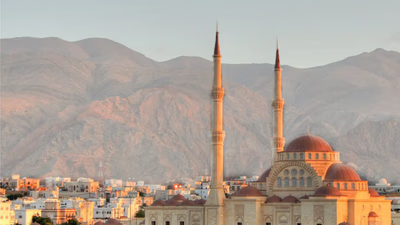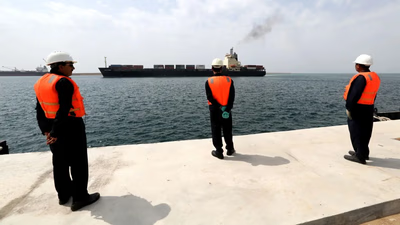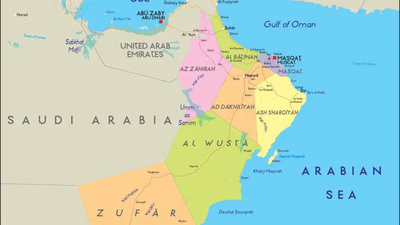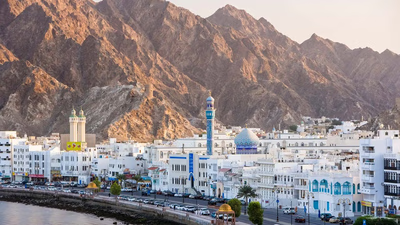
Explore Oman"s rich culture: Islam, Arabic language, traditions. "
The majority of the people in Oman practice Islam. Islam is the official religion of the country, and the majority of Omanis are Muslims. The practice of Islam in Oman is predominantly of the Ibadi sect, which is a distinct branch of Islam. Ibadi Islam is characterized by its moderation and adherence to the principles of tolerance and coexistence.
Oman is one of the southern neighbors of Iran. The official language in Oman, like other countries in the Persian Gulf, is Arabic, but it is good to know that other languages such as Baluchi and Hindi are also common in this country, also due to communication. History between Oman and Zanzibar Some people in Oman also speak Swahili, English is the second language in this country like in other parts of the world, and when traveling to Oman, if you are familiar with Arabic No problem, because almost all the paintings in the cities of Oman are in both Arabic and English, the people of Oman follow the religion of Islam, and almost 75% of them follow the religion of Ibadiyya, which is one of the oldest religions in Islam.
The people of Oman, Shiites and Sunnis, also live in this country, but there are not many of them, and for this reason, occasions such as Ramadan and other holidays that are important for Sunnis and Shiites are also planned in this country. When traveling to Oman, one of the things you should get acquainted with is the customs and culture of the people of Oman, because this country is one of the Arab countries and its people have special customs, and it is better to get acquainted with these customs before traveling. Do not get in trouble and you will be better able to communicate with these people, getting to know the customs and traditions of these people will be as attractive to you as the tourist attractions of Oman.
Omani m en, like other Arab men, wear a Deshdashe (Beshet), which is a dress with long sleeves that is usually collarless and reaches to the ankles. At the collar, there is a button that is usually fastened and a pendant. Which is always fragrant, also men in Oman wear turbans and some of them also hold wooden or metal sticks which is more common among the elderly and old people, it is good to know that Omani men in In their official ceremonies, they wear a dagger, which is a symbol of masculine dignity, which, of course, is almost the same for men in most Arab countries.
Omani women, like other Arab women, wear the Islamic hijab and wear long clothes, and many also cover their hands and face with shawl, but you should know that this dress of Omani men, like other Arab men, is a Dashdashe, which is a dress with long sleeves, which is usually without collar and up to the ankles. There is a button on the collar that is usually fastened and a pendant that is always fragrant, also men in Oman wear a turban and some of them also hold wooden or metal sticks, which are more common among the elderly.
It is good to know that Omani men wear a dagger, which is a symbol of masculine dignity, on their waists in their official ceremonies. Of course, in most Arab countries, men's clothing is almost the same, Omani women, like other Arab women, wear the Islamic hijab and wear long clothes, and many of them also cover their hands and face and wear a shawl. But you should know that this is less common in Oman than in other Arab countries.
The official language of Oman is Arabic. Arabic is widely spoken and used in daily life, including in government, education, business, and media. English is also widely understood and spoken, particularly in urban areas and among the younger generation. English is often used as a medium of communication in business and tourism sectors. Additionally, there are various regional dialects spoken by different communities within Oman.
-

Oman is predominantly an Islamic country, with the majority of its population practicing the Ibadi sect, known for its moderation and tolerance. Arabic is the official language, but English is widely spoken, especially in urban areas. Other languages such as Baluchi and Hindi are also common due to historical ties and trade. The cultural practices of Oman reflect its Islamic heritage, with traditional clothing like the Deshdashe for men and hijabs for women being prevalent. Understanding Omani customs is essential for visitors to enhance communication and appreciation of local traditions. The coexistence of various Islamic sects, including Shiites and Sunnis, contributes to a rich cultural tapestry where significant religious occasions are observed collectively. This cultural insight is vital for those engaging in trade or business networking in Oman, as it fosters better relationships with local partners. The country"s unique blend of tradition and modernity makes it an attractive destination for both tourism and commerce. "
-

Exporting goods to Oman requires meticulous documentation, including a commercial invoice, packing list, bill of lading, and certificate of origin. Each product must be classified under a specific HS code to determine applicable customs duties and regulations. It is crucial to identify and declare the correct HS code when exporting. Oman has strict regulations regarding prohibited and restricted items, which may include narcotics, weapons, and counterfeit goods. Certain goods may also require export permits or licenses, particularly those related to sensitive technologies or military equipment. Engaging a customs broker or freight forwarder experienced in Omani regulations can facilitate compliance with customs procedures. Oman boasts several key ports such as Qaboos Port and Sohar Port, which are vital for trade operations. The average customs tariff for agricultural exports is around 4.
7%, with some commodities exempt from duties. Additionally, value-added tax (VAT) applies to most goods in Oman. Businesses looking to streamline their operations can benefit from the Authorized Economic Operator program that expedites customs processes for compliant companies. Proper packaging and labeling according to international standards are essential for successful exports.
-

Oman, located on the southeastern coast of the Arabian Peninsula, shares borders with the UAE, Saudi Arabia, and Yemen. Its capital, Muscat, is a vibrant city known for its rich history and cultural attractions. The geography of Oman features rugged mountains, vast deserts like the Wahiba Sands, and a stunning coastline along the Arabian Sea. Muscat serves as a key maritime hub with Port Sultan Qaboos facilitating trade and tourism. The city blends traditional charm with modern developments, offering attractions such as the Sultan Qaboos Grand Mosque and Royal Opera House. Oman"s climate is characterized by hot summers and milder winters, with high humidity along the coast. The local culture is deeply rooted in tradition, reflected in its cuisine and hospitality. Oman actively promotes tourism to showcase its natural beauty and heritage, making it an appealing destination for travelers seeking adventure and cultural experiences. "
-

Oman is strategically positioned within the Gulf Cooperation Council, collaborating closely with Saudi Arabia, UAE, Qatar, Bahrain, and Kuwait on economic and security matters. Its relationships extend globally, notably with the United States and the United Kingdom, focusing on trade and defense. China stands out as Oman"s largest trading partner, accounting for a significant portion of both exports and imports. Other key partners include India, Japan, and Saudi Arabia. Oman’s import landscape features machinery, fossil fuels, steel products, and food items. The country is enhancing its infrastructure to boost trade capabilities and attract foreign investment. Recent years have seen a surge in construction-related imports as Oman develops new economic zones. Iranian traders are also active in exporting construction materials to Oman.
The nation’s geographic location near the Indian Ocean positions it as a vital regional trade hub. Oman"s proactive approach to fostering international partnerships aims to strengthen its economic standing in West Asia.
-

Oman"s climate is characterized by extremely hot summers, with temperatures often exceeding 40°C (104°F) in coastal areas and even higher inland. The hottest months are June, July, and August, with minimal rainfall and high humidity along the coast. Winters are milder, ranging from 20 to 30°C (68 to 86°F) during the day, with cooler nights. Muscat experiences very little annual rainfall, averaging about 100 mm (4 inches), primarily from December to April. Dust storms can occur during summer months due to northerly winds. Oman"s geographical location near the equator contributes to its hot climate, which can deter migration compared to cooler countries. However, Oman has diversified its economy by reducing oil dependence and enhancing tourism and fishing industries. Coastal areas benefit from the moderating effects of the Arabian Sea and Gulf of Oman, leading to more pleasant temperatures than the interior regions. The southern region of Dhofar experiences a unique monsoon season known as Khareef from June to September, bringing significant rainfall and transforming landscapes into lush greenery.





